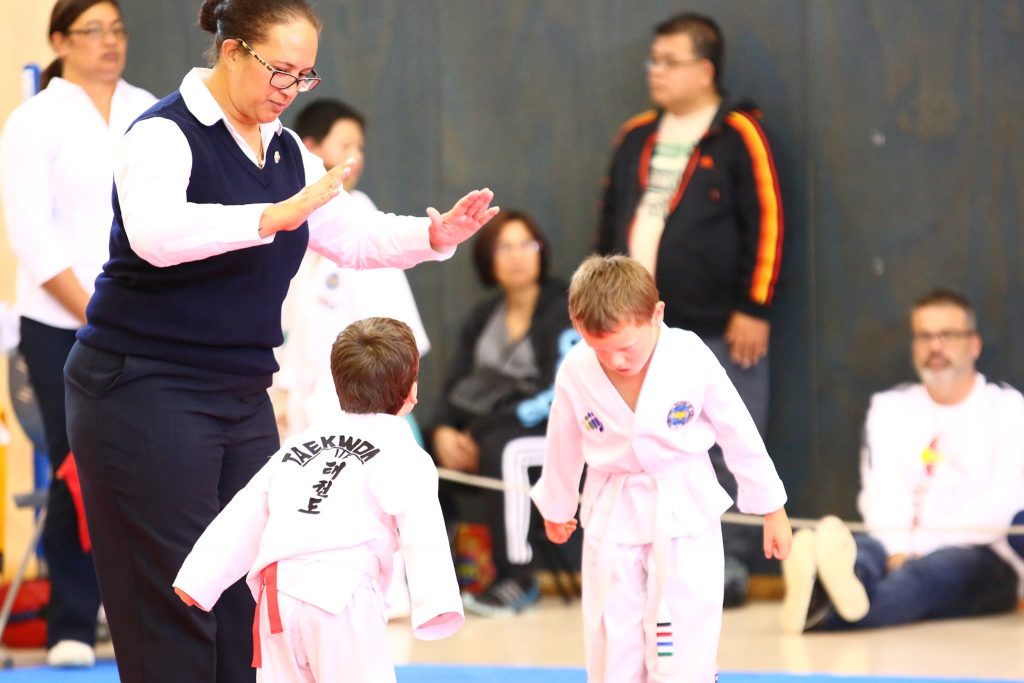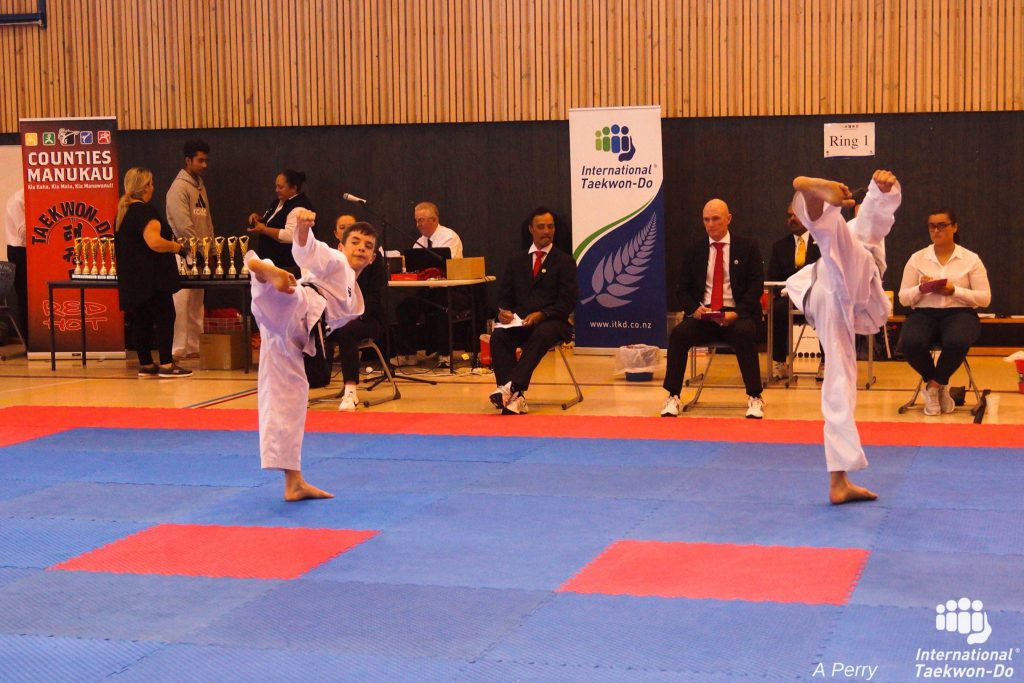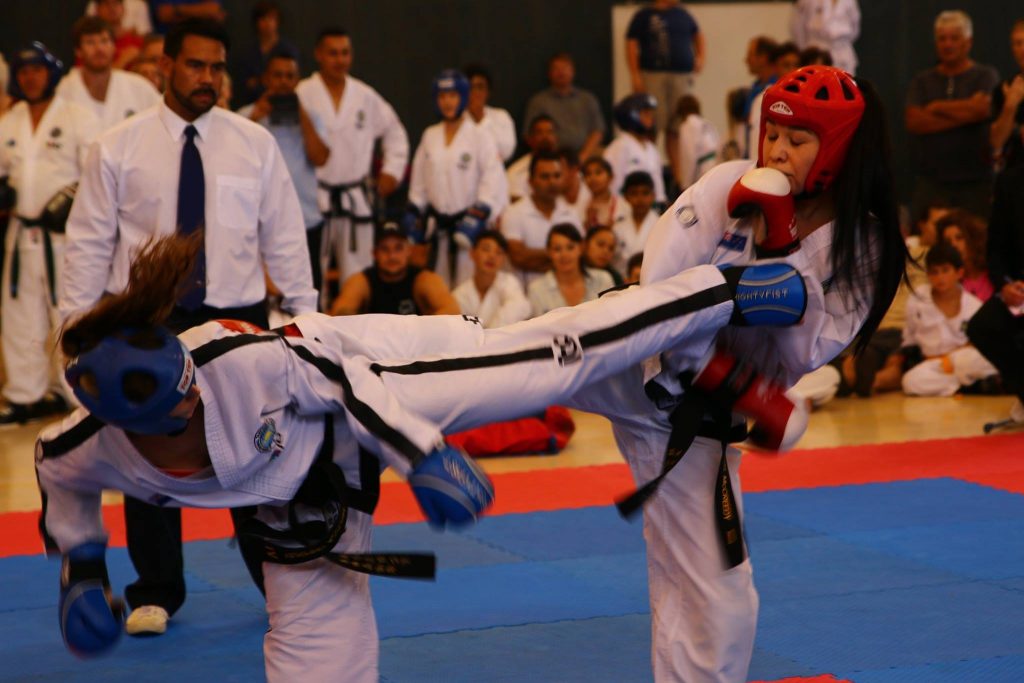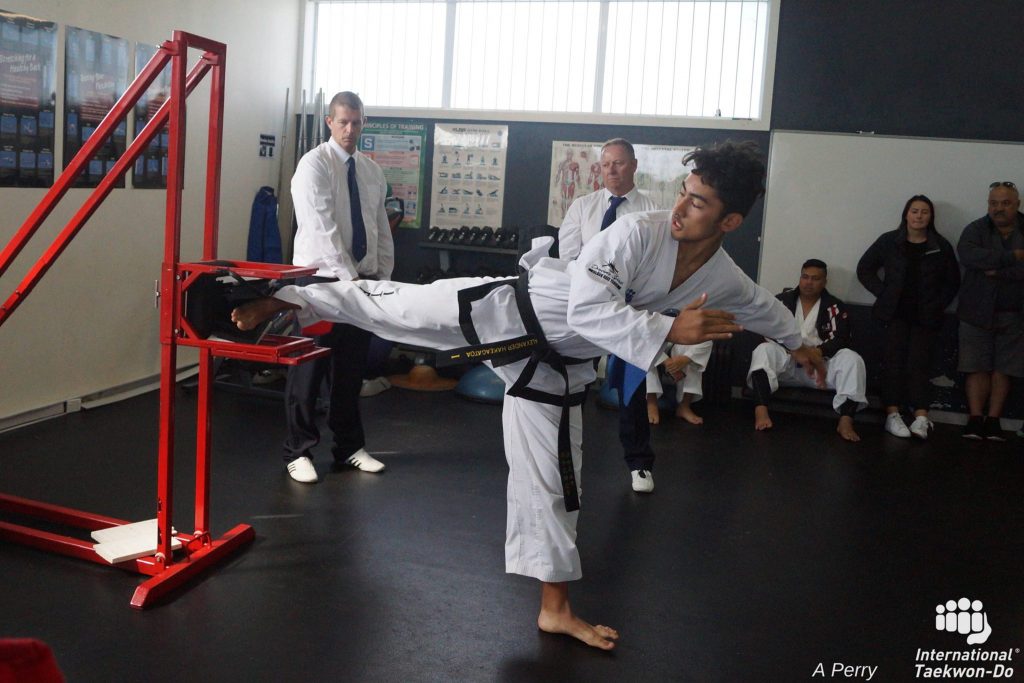Matt Pilcher, 1st Gup, Dragon’s Spirit Papatoetoe
Entering your first tournament can be scary and make you very nervous. We are lucky in New Zealand that we have a wide range of tournaments to enter, ranging from Peewee’s, Under 18’s, Regionals, National’s, and other local round robin style tournaments.
Each tournament offers different level’s of competition as well as disciplines, such as power breaking, special technique, power punch, pre-arranged sparring, team patterns etc
Some people enter everything, others just enter one or two events. This is your choice and enter whatever you feel comfortable competing in. Taekwon-Do New Zealand takes safety very seriously, and there are different levels of contact for sparring tournaments. Ranging from non-contact to full contact for the seniors. Even with the seniors, the level of contact is managed and not excessive. The idea is to beat your opponent, not beat them up.

The tournament will be advertised and promoted through your club or website and your instructor will mention it and encourage students to enter. This is the time to decide if you would like to give it a go, and what you would like to enter. You may just want to enter patterns, or patterns and sparring. The choice is yours. Once you have entered online, then you need to make sure you get prepared. If you are sparring, you will need to make sure you have a mouth guard and shin pads. You will also need sparring gear. This can be purchased or most clubs have sets you can borrow and share for the day. You will need to have a clean ironed dobok ready, and your correct belt. You will also need to bring some snacks and a couple of bottles of water.
When you arrive at the tournament, there will usually be a registration table where you will check your name off, confirm the evens and divisions your are entered in, and also pay the registration fee if not done previously.
After registration, there is usually an area where your club or region will be seated and that is where you put your gear and it is where your family and supporters can sit. There will be a timetable displayed somewhere at the venue which will show the divisions and approx times that you will be on. Be ready in advance. If you are sparring, make sure you have your gear on and ready to go at least 2 bouts before yours. There will be a ring marshal at each ring with a clip board. they control the entry to the ring, and will call you up when your turn is coming. Listen carefully for your name.
The start of the tournament is very much like the beginning of a class. You will form up in rank, bow to the seniors, and say the student oath. Then you will usually sit down and the tournament organiser will say a few words, go over some rules, explain what time lunch is, and officially start the day.
Patterns are usually first up and go until about lunch time, then they have sparring with Power and Specialty in the afternoon.
Each division may have 2 or it may have 20 students, so you may need to go through a few rounds of patterns or sparring to get into the finals for a medal. They will issue a Gold, Silver, and Bronze for 1st, 2nd, and 3rd place. Depending on the tournament, they will give you your medals in the ring at the end of each division. They may also have special trophy’s for best belt etc so it pays to stick around until the end of the day. Staying until the end is always a good idea as you can show your support to your friends and fellow club mates that might be competing later in the day. Everyone deserves support and encouragement.

Patterns: You will be called to the ring and will enter the ring with another competitor. Stand at the edge of the ring facing the judges until asked to step forward. bow, and walk up to your square on the mat. The official will then ask you to bow to them and to your other competitor. Once done, then go into Junbi position, ready for your pattern. The official will call out a pattern name for you to complete. The pattern will be of your belt and below only. Depending on the tournament, you may be asked to do 1 or 2 patterns. Once the patterns are completed, and the official has told you to relax, then the judges will add up their scores. The head juror will then stand and announce the winner and ask you to bow to the official and your opponent before leaving the ring. If you win your round, the ring marshal will tell you to stay close as you will be called for your next round. this continues until you get into the finals for a medal

Sparring: Much the same routine as patterns, except there will be a centre ref that will call you into the ring. You will bow before you walk onto the ring. The centre ref controls the bout. He/She will get you to bow to the Juror, themselves, and to you opponent. Then you will step back into a sparring ready position (Usually into an L-Stance forearm guarding block). The centre ref will then start the bout by saying ‘Sijak”. You will spar for 2 minutes (Times may change for each event). There is usually two rounds per bout. At the end of the second round, the centre ref will say ‘Guman’ and you will go back to your spots. He will then get you to bow to the jurors, themselves, and your opponent, then he will grab your hand and the hand of your opponent, and raise the hand of the winner. The same then happens like in patterns. If you win your bout, you will be told to stay close as you will be required to spar again, working your way up to the finals for medals.
Power Breaking and Specialty: These events run a bit differently as you all get together as a group in your division and perform each technique, whether it be an overhead kick in specialty, or a turning kick in power breaking. Each technique completed successfully will give you points. Once each competitor has had their turn, the points will be added up and 1st, 2nd, and 3rd place winners will be announced. If there is a tie break, then a playoff will occur to find a winner. The numbers of boards to break or the height of the specialty machines is predetermined in the ITKD Tournament rules or outlined in the specific tournament rules. Each tournament can adjust the heights and board numbers depending on competitor ages, and availability of equipment.
Official rules and heights etc can be found under the document section on the ITKD website. This document section also has documents on officials hand signals etc which could be good to look over for reference.

